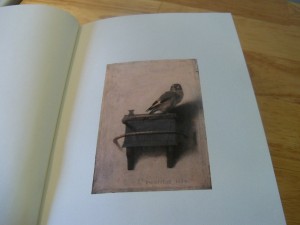 Front Matter is one of the last sections of a book manuscript for an author to complete. But it’s the first thing a reader sees. Before page 1, there are several items that appear in the front pages of any book. Some pages are mandatory: title, copyright, and table of contents. Others are optional, upon the discretion of the author and publisher. Every page before the first one in Chapter 1 is paginated using lower case roman numerals beginning with the Title Page is i.
Front Matter is one of the last sections of a book manuscript for an author to complete. But it’s the first thing a reader sees. Before page 1, there are several items that appear in the front pages of any book. Some pages are mandatory: title, copyright, and table of contents. Others are optional, upon the discretion of the author and publisher. Every page before the first one in Chapter 1 is paginated using lower case roman numerals beginning with the Title Page is i.
Except for the Copyright Page, all sections of the front matter begin on a recto page. Verso pages are those on the left hand side of an open book; recto pages are on the right. In the body of the book manuscript, every new chapter begins on a recto page. This means if your chapter ends on an odd-numbered page, you will have one blank page between the end of the chapter and the start of the next one.
 Because printed books are bound together in signatures – 32 pages constitutes a signature – the total number of book pages is always divisible by eight. This is why you often find blank pages or additional front matter at the beginning or end of a book.
Because printed books are bound together in signatures – 32 pages constitutes a signature – the total number of book pages is always divisible by eight. This is why you often find blank pages or additional front matter at the beginning or end of a book.
 Title Page – [required] The title and author’s name and appears centered on the page. This is always the first printed page.
Title Page – [required] The title and author’s name and appears centered on the page. This is always the first printed page.
Copyright Page – [required] This page contains copyright information (title, subtitle, author, publisher, date of publication, subject headings, Library of Congress and/or Dewey decimal designation, ISBN number, and Library of Congress Cataloging Information).
 Dedication Page -[optional] A personal consecration by the author appears on a single page, centered.
Dedication Page -[optional] A personal consecration by the author appears on a single page, centered.
Epigraph – [optional] A quote or saying to suggest the theme of the book.
Foreword – [optional] A short essay typically written by someone other than the author. An opening statement by a well-known author or expert lends credibility and a stamp of approval.
 Preface – [optional] Written by the author, a Preface explains to the reader why the author wrote the book or how they came to write it. It is an essay written about the writing of the book.
Preface – [optional] Written by the author, a Preface explains to the reader why the author wrote the book or how they came to write it. It is an essay written about the writing of the book.
Author’s Introduction – [optional] Provides an overview of what will be covered in the book. Sometimes it establishes definitions or methodologies that are used throughout the book. This short essay should convey to a reader how to use this book.
Note to Readers or Author’s Note – [optional] Inform your readers at the outset of what they need to know about how to read what you have written. It may involve an explanation of how the author attributes sources, took literary liberties, referenced materials, or organized the content.
 Prologue – The story before the story is offered to a reader to establish setting and provides necessary background information.
Prologue – The story before the story is offered to a reader to establish setting and provides necessary background information.
Acknowledgements – This is the opportunity for an author to acknowledge those who contributed to your publication efforts and show your appreciation for their assistance and support. Some put the Acknowledgements before the Table of Contents and others put it after. Or it may appear in the back matter.
Table of Contents – This outline of chapters usually is the last item of front matter before page 1 of the manuscript. Pagination is included.
The preparation of front matter is the author’s responsibility when submitting the final digital version of a manuscript for publication.
Next Friday, find out what goes into the back matter of a book.

Hey, thanks. I love learning about everything I really ought to know already since I’m writing a book. This info is great for me as I’ve never done any of this before and never paid much attention to how things are done in the books I read. Now I’m watching. Looking forward to back matter.
Cheers!
Thanks for the great explanation of front matter. I would suggest two things though. I think it depends on the genre and/or the publisher whether or not that blank page is left if the chapter ends on the right. I’ve read many books where chapters began on the left page. I can assume it is to reduce the number of overall pages and in the long run save money (and trees).
I don’t follow the ‘chapter must begin on the right page’ rule for the reasons stated above. You may add a dozen pages to a book if you have thirty chapters and follow this rule. I have no issues with left-page chapter starts, but I do with blank pages in the middle of a book. It feels like an abrupt end, like the ending of book one, not just a chapter. I suppose I feel this way because most of the books I read don’t leave an empty page. Maybe in Canada we don’t follow that rule in general. I thought it might be more of a literary genre practice.
Also, the table of contents (I feel) is option in some cases. I do not use one for fiction. I do this for two reasons: 1) I don’t often see other publishers use them, and 2) I never read them, so I can only assume many others don’t either, which makes them a waste of time to create and a waste of paper (and trees and money). Non-fiction books do need them though, and I used one for my anthology because I believed readers would like to glance over the stories contained in the collection.
I wish I had this list when I began self-publishing. It would have saved me a lot of work of gathering it all myself. I consulted several books to see how each was set up and what was included where to determine what I’d use as front matter. Thanks for sharing your insight and the terminology.
Thanks Diane for leaving your comment. You are correct in that some of these “rules” are like “guidelines” that vary across genre and publisher. The only required front matter is a title page and copyright information. The author needs to think about what elements they need in the front of their book and then work with the publisher to format them accordingly.
Thanks, Jill. Coincidentally, my blog post today discussed front and back matter for eBooks. When I began self-publishing, I thought eBooks and print books would contain almost the identical matter formatting, but over the past year, I have learned differently.
My post is here if you are interested: http://dianetibert.com/2014/01/08/updating-published-ebooks/
I look forward to seeing your post on back matter this Friday.
Thanks for mentioning how different the formats can be for print and ebooks in terms of front and back matter. Technical editing for ebooks requires a specific skill set. I hope you will come back this Friday for more about back matter.
This is helpful information, Jill! (I didn’t know what recto and verso mean, but I do now.) Even if an author is working with a publisher, it still behooves him or her to get acquainted with these rules. It will mean less editing work down the road.